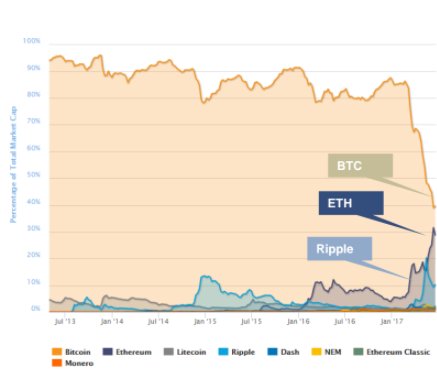
Are Cryptocurrencies Recovering or is This a Dead cat Bounce?
No one can say there is such a thing as a boring day in the world of Bitcoin and cryptocurrency. After the onslaught of price declines throughout the weekend, we kick off this Monday on a positive note. All currencies are seemingly recovering their losses. The Bitcoin price surpassed US$2,000 again, but it looks like Ethereum is the winner of the day so far. Other currencies all doing quite well too, for now.
CRYPTOCURRENCY MARKET SEES A DEAD CAT BOUNCE
Even though we are not a big fan of the term “dead cat bounce“, it accurately describes what is going on in the cryptocurrency world right now, by the look of things. The markets are showing signs of positive momentum, but there is no reason to get overly excited just yet. After all, the gains made today can easily be wiped out in an hour or two of bearish trading. This is especially true for the currencies showing large gains compared to yesterday.
Taking a closer look at the charts, we can see there is only one coin in the top 50 without a green number next to it right now. Overall, that is a positive sign for cryptocurrency as a whole. At the same time, people have to keep in mind these positive changes are a direct result of the Bitcoin price going up slowly. Should Bitcoin drop in value again, these short-term gains for all altcoins will be wiped out pretty quickly.
While it is good to see the Bitcoin price bounce back to above US$2,000, maintaining that position will be quite challenging. There is a lot of negative pressure on the market, which may push the price back to to the US$1,900 range in the coming hours. Such a retrace will effectively prove to be a tough time for any altcoin struggling as of late, including the likes of Ethereum and Dash.
Speaking of those two particular altcoins, Dash has seen its value climb by 13.52% over the past 24 hours. This is despite a trading volume of under US$50m, mind you. Ethereum, on the other hand, notes an 18.02% gain over the past 24 hours, thanks to a trading volume which even surpasses Bitcoin’s. Many people still hope to see ETH return to US$400, but for now, it is a struggle to remain above US$160.
Seeing the Ethereum trading volume surpass Bitcoin’s is not entirely surprising. Korea and China are trying to push the ETH price back up, yet their efforts are not wildly successful so far. In fact, the price on Bithumb – denominated in US Dollars- is below the ETH/BTC price on Poloniex when converting it to USD. That is somewhat surprising, considering Korean exchanges often depict higher values for cryptocurrencies compared to Western markets.
It is still too early to tell if the cryptocurrency markets are effectively recovering. For all we know, this is just a temporary blip on the radar, which will be nullified before the day is over. It seems plausible to assume Bitcoin will have a tough time remaining above US$2,000 for an extended period of time. The markets remain volatile for quite some time to come, but there is always sunshine beyond the dip. No one needs to panic right now, as things will be alright in the end.
David Ogden
Entrepreneur

Author: JP Buntinx
David








